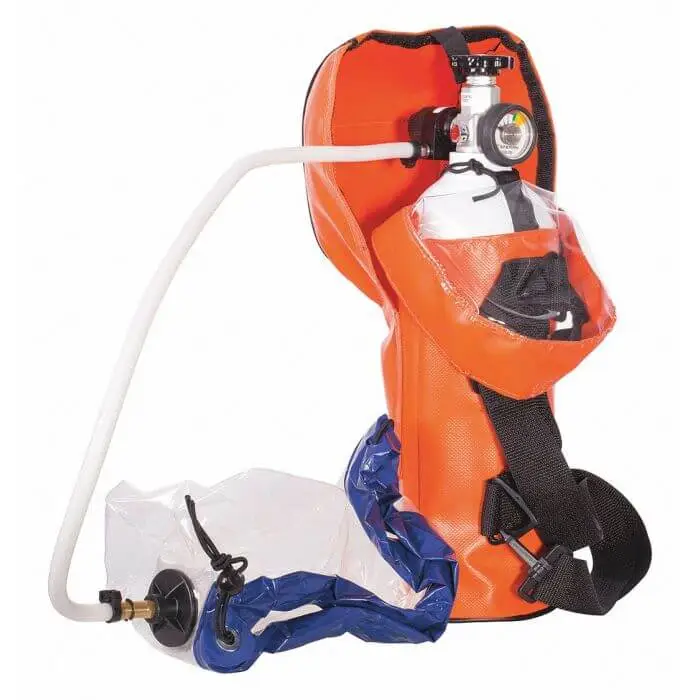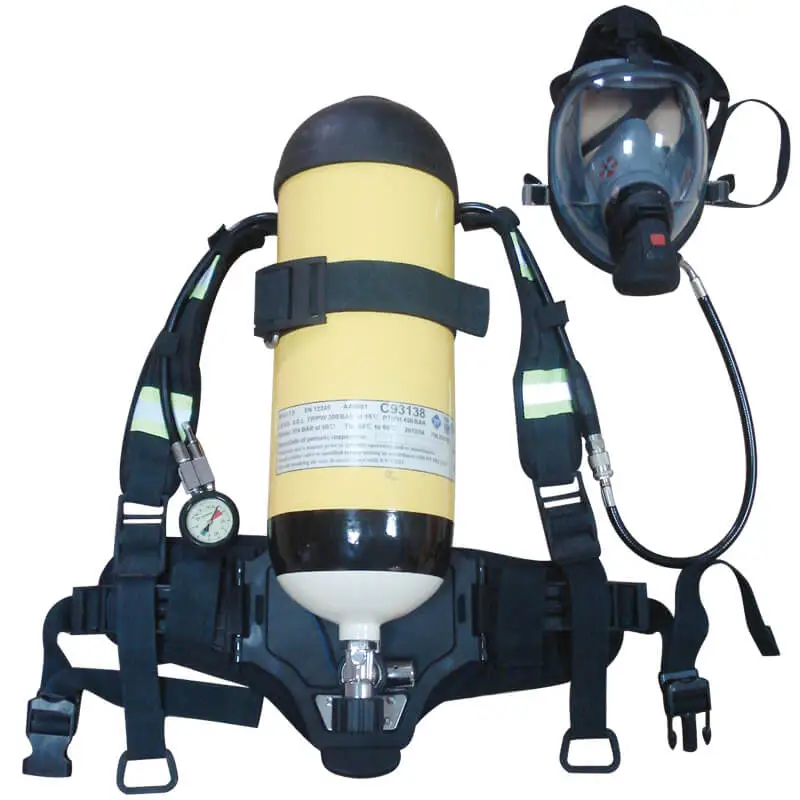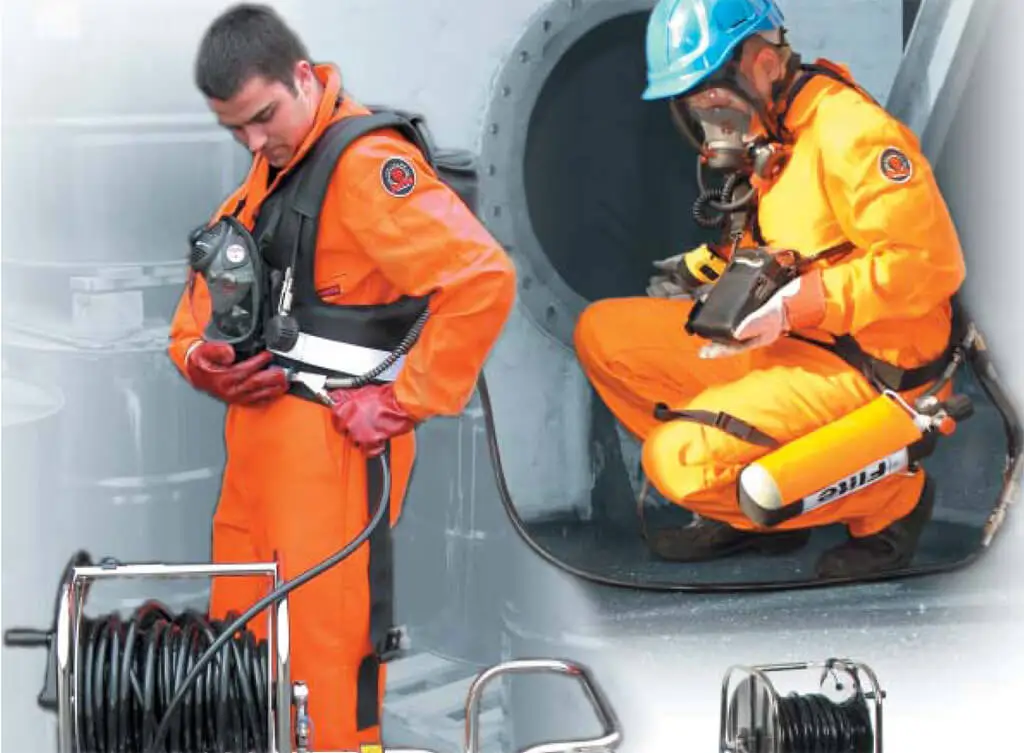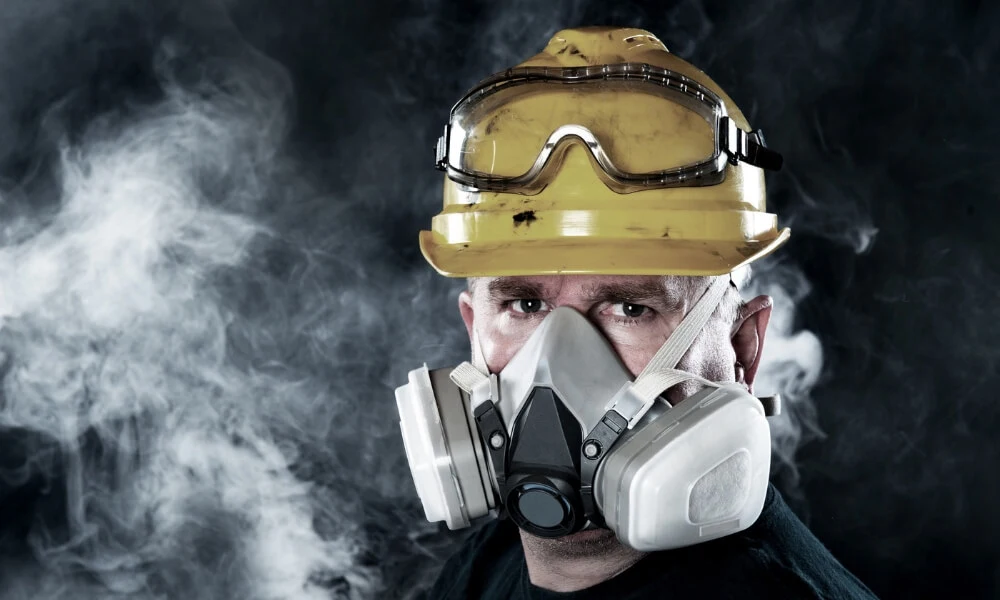Navigating hazardous environments requires not just courage and skill but also the right equipment to ensure safety. A crucial component in this protective arsenal is the Breathing Apparatus (BA). This device stands between life and the potentially fatal atmospheres in certain workspaces or emergencies. But did you know that not all BAs are made equal?
This blog delve into the three main types of Breathing Apparatuses, each tailored for specific scenarios and challenges. Whether you’re a professional in the field or someone curious about safety equipment, this guide will offer insights into the tools that help individuals breathe safely in the most inhospitable conditions.
What is Breathing Apparatus?
A Breathing Apparatus (BA) is an essential piece of equipment designed to safeguard individuals in environments where the natural ambient air is unsuitable or unsafe to breathe. The apparatus ensures that wearers are supplied with breathable air, allowing them to function or move safely in otherwise inhospitable conditions.
The importance of BA cannot be overstated; it not only ensures the safety and health of wearers but also enables critical tasks to be performed in places that would otherwise be inaccessible, playing an indispensable role in rescue operations, industrial work, and numerous other sectors.
Three Main Different Types Of Breathing Apparatus
Breathing apparatuses supply individuals with breathable air in environments where it is compromised or during specific activities where the regular ambient air isn’t sufficient. Here are three main types:
1. Escape Breathing Apparatus (EBA)

An Escape Breathing Apparatus (EBA) is a respiratory protective device designed for emergency use, providing a short-term supply of breathable air to facilitate a safe exit from suddenly hazardous environments. It is lightweight and consists of a small compressed air cylinder connected to a face mask or hood. Its primary function is to protect users in scenarios like gas leaks or unexpected oxygen deficiencies.
Purpose
The primary objective of an Escape Breathing Apparatus (EBA) is to provide a safe, temporary source of breathable air to individuals in situations where the ambient environment has become immediately dangerous to life or health. This could arise from a sudden influx of toxic gases, a drop in oxygen levels, or the release of smoke or other contaminants. Unlike other breathing systems, EBA is specifically for quick exit scenarios, not prolonged work in hazardous settings.
Components
- Air Cylinder: This small, high-pressure cylinder is filled with breathable air. Due to its purpose of providing only short-duration assistance, the cylinder is smaller than those found on other systems.
- Face Mask or Hood: The choice between a face mask or hood varies based on the specific EBA design and the intended user. A mask provides a tight seal around the face, ensuring no contaminated air is inhaled. Conversely, Hoods cover the entire head and are often easier to don quickly, especially for untrained individuals. They can accommodate individuals with facial hair or glasses, which can prevent a good seal with a mask.
Duration
EBAs have a limited supply of air due to their small-sized cylinders. The typical range is 10 to 30 minutes, depending on the user’s breathing rate and the EBA’s specific design. Users must be aware of this time limit and act swiftly.
Usage Scenarios
- Confined Spaces: Workers operating in confined spaces like tanks, vaults, or silos might carry EBAs. If a hazardous gas gets released or oxygen levels suddenly drop, the EBA allows them to safely exit.
- Chemical Plants and Industrial Facilities: Workers in facilities that process or store hazardous chemicals might be equipped with or have access to EBAs. The EBA can provide critical evacuation minutes in a chemical spill or release.
- Tunnels and Underground Facilities: In subterranean environments, the risk of sudden changes in air quality is significant. Here, EBA can be a lifeline for workers or even commuters in emergencies.
- Marine and Offshore: On ships or oil platforms, there’s a risk of fires, oil or gas leaks. EBAs can be crucial for allowing personnel to reach safe zones or lifeboats.
Advantages
- Quick to Don: EBAs are designed for swift and simple use. This is vital when every second counts.
- Portable and Lightweight: Their smaller size and singular purpose make them more portable and lightweight than full-sized breathing apparatus.
Limitations
- Short Air Supply: The limited air supply means users must act swiftly and decisively. It’s not intended for prolonged use or entering hazardous areas intending to stay.
- Not for Recurrent Use: The EBA must often be refilled or serviced once activated. It’s a one-time-use device in many cases.
Training
Though designed for simplicity, training is still recommended to ensure users understand the limitations of the EBA, how to do it properly, and how to exit hazardous areas efficiently. Familiarity with the device can significantly enhance its effectiveness during real emergencies.
2. Self-Contained Breathing Apparatus (SCBA)

A Self-Contained Breathing Apparatus (SCBA) is a respiratory protection device that supplies wearers with clean compressed air from an attached cylinder, allowing them to breathe in environments where ambient air is unsafe or insufficient. It consists of a high-pressure air cylinder, regulator, face mask, and harness, and is commonly used by firefighters, industrial workers, and rescue personnel in hazardous conditions.
Purpose
SCBA is engineered for those entering environments where the air is known to be immediately dangerous to life or health. Unlike EBAs, which are tailored for quick escapes, SCBAs are for sustained, active operations within a hazardous environment.
Components
- High-pressure Air Cylinder: This cylinder is filled with compressed, breathable air. It’s larger than those in EBAs, allowing for a longer duration of use.
- Regulator: This vital component reduces the high pressure from the cylinder to a breathable level. It ensures a steady flow of air to the face mask.
- Face Mask: A sealed mask covering the entire face, preventing any contaminated external air from inhaling. The mask is connected to the air source and provides clear vision, safety, and communication capability.
- Harness and Backplate: This system holds the cylinder and allows users to wear the entire SCBA apparatus on their back comfortably. It’s designed for even weight distribution and ease of movement.
- Audible Alarm: Many SCBAs alert the wearer when the air supply runs low. This feature gives the user ample time to exit the hazardous area.
Duration
While the duration can vary, a typical SCBA provides air for 30 minutes to 2 hours. The exact time depends on the size of the air cylinder and the wearer’s breathing rate. Users must monitor their air supply and be aware of their operational limits.
Usage Scenarios
- Firefighting: Firefighters employ SCBAs to protect against smoke, heated gases, and other toxic substances when battling fires. This allows them to enter burning structures and conduct rescue operations.
- Hazardous Material Handling: Workers might encounter tanks or silos containing toxic substances in industrial settings. Before entry, an SCBA can be donned to ensure safety.
- Disaster Response: During chemical spills, gas leaks, or other large-scale emergencies, response teams utilize SCBAs to safely navigate and operate in the affected area.
- Underground Rescue: In mines or tunnels, where the risk of reduced oxygen or toxic gas presence is high, rescue teams use SCBA to safely execute operations.
Advantages
- Mobility: Since the entire system is worn on the user, there’s greater freedom of movement than in systems reliant on external air sources.
- Extended Operation Time: Offers longer operational time than EBAs, allowing for more prolonged activity in hazardous zones.
- Comprehensive Protection: Offers full-face protection, protecting eyes and respiratory system from harmful agents.
Limitations
- Weight and Bulk: The apparatus, especially the cylinder, can be heavy and might impede rapid movement in confined spaces.
- Limited Air Supply: Although it provides longer than EBA, the air supply is still finite. Regular monitoring is essential.
- Maintenance: SCBAs require meticulous maintenance and regular checks to function correctly during emergencies.
Training
Using an SCBA effectively demands training. Users must learn to don the apparatus swiftly, understand its operational limits, and know maintenance procedures. Regular drills and practice ensure that the user can focus on the task in real-life emergencies, knowing their equipment is reliable and familiar.
3. Airline Breathing Apparatus (Airline BA)

An Airline Breathing Apparatus (Airline BA) is a respiratory protective device that delivers a continuous supply of breathable air to the user through a long hose connected to a remote air source, such as a compressor or high-pressure cylinder bank. Unlike self-contained systems, it relies on an external air supply, making it suitable for extended durations in hazardous environments. However, mobility may be limited due to the attached airline.
Purpose
The Airline BA is designed to grant sustained protection in situations demanding prolonged presence in hazardous environments. Unlike the SCBA, which has a limited onboard air supply, the Airline BA is continuously fed from an external air source.
Components
- Air Supply Source: High-pressure air cylinders or a breathable air compressor. This stationary source pumps air through the airline hose to the user.
- Airline Hose: A durable, long hose that connects the user to the air supply. This hose can often be up to 100 meters or more in length.
- Face Mask: Like the SCBA, the face mask offers a sealed environment for the user’s face, ensuring that only the supplied air is breathed in. It is connected directly to the airline.
- Airline Harness: This helps manage the airline hose, reducing the risk of tangling or snagging, especially in confined spaces.
- Escape Cylinder: Many Airline BAs are equipped with an emergency escape cylinder. This backup air supply kicks in if the primary air source fails, granting the user time to exit the hazardous environment.
Duration
The principal advantage of an Airline BA is its virtually unlimited air supply, contingent on the continuous operation of the external source. However, the escape cylinder, when present, usually provides only 10-15 minutes of air.
Usage Scenarios
- Tank Cleaning: Large tanks containing chemicals or residues may necessitate workers to be inside for extended durations. Airline BAs allow workers to stay inside safely without worrying about air supply exhaustion.
- Sandblasting & Painting: Industrial tasks such as sandblasting or spray painting in enclosed spaces might expose workers to harmful particles or fumes. An Airline BA provides constant fresh air during these lengthy procedures.
- Underwater Operations: While SCUBA is the most recognized form of underwater breathing apparatus, certain underwater jobs, especially those close to the surface or where mobility isn’t crucial, might use an Airline BA system.
- Confined Space Work: In industries where workers might be confined for long periods, Airline BAs offer a continuous supply of fresh air.
Advantages
- Continuous Air Supply: As long as the external source operates flawlessly, the user has an uninterrupted air supply.
- Reduced User Fatigue: Since carrying a bulky cylinder is unnecessary, users often experience less physical strain.
- Cost-Efficient for Extended Work: Using an Airline BA can be more cost-effective than repeatedly refilling SCBA cylinders for long-duration tasks.
Limitations
- Mobility Restriction: The airline hose can limit the user’s range of movement. It can also become a tripping hazard.
- Dependency on External Source: If the air source malfunctions or is disrupted, the user’s air supply could be jeopardized.
- Risk of Hose Damage: The airline hose can be vulnerable to damage, especially in environments with sharp objects or intense heat.
Safety Protocols
Workers using Airline BAs must be trained to regularly check their equipment, especially the condition of the airline hose. They should also always be aware of their escape routes and ensure the backup escape cylinder, if present, is fully charged and functional. The work area should be set up to minimize the risk of hose entanglement or damage, and regular communication between the user and a safety observer or spotter is crucial.
Conclusion
In the realm of safety and protective gear, Breathing Apparatuses stand out as vital lifelines, safeguarding individuals against harmful environments. Through our exploration of the three primary types – Escape Breathing Apparatus (EBA), Self-Contained Breathing Apparatus (SCBA), and Airline Breathing Apparatus (Airline BA) – we’ve seen how each is uniquely designed to meet specific challenges. Their existence underscores the importance of tailored safety solutions for varied scenarios.
Understanding and selecting the right BA is paramount as we venture into or work in potentially hazardous situations. With their specialized functionalities, these devices ensure that breathing, our most fundamental life process, remains uncompromised despite adversity.

